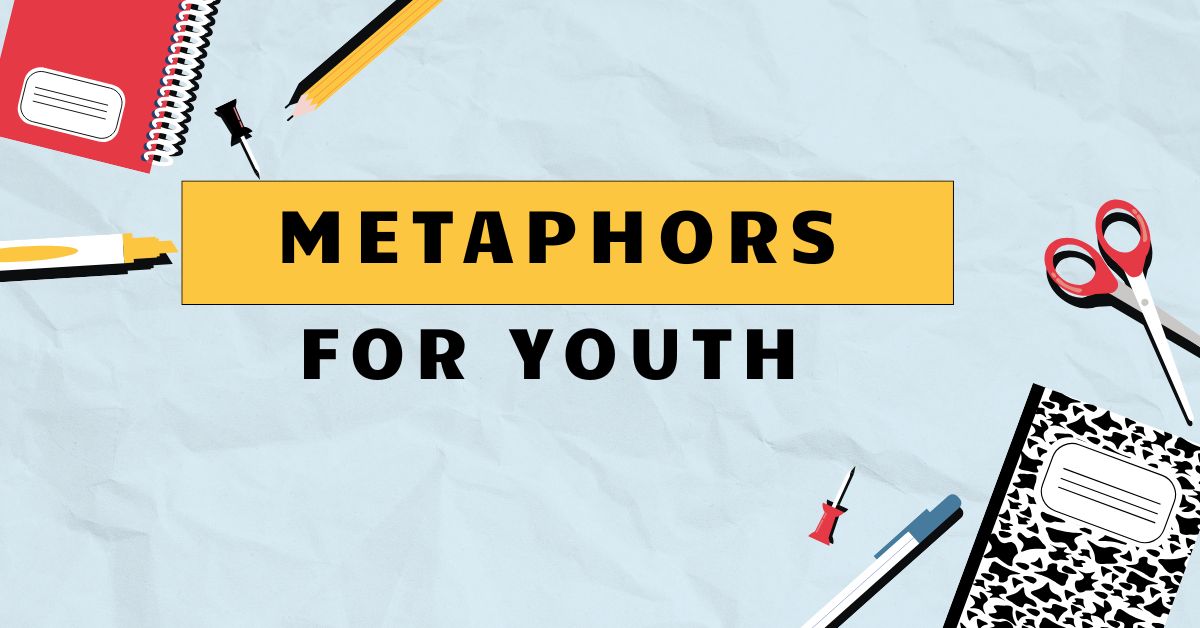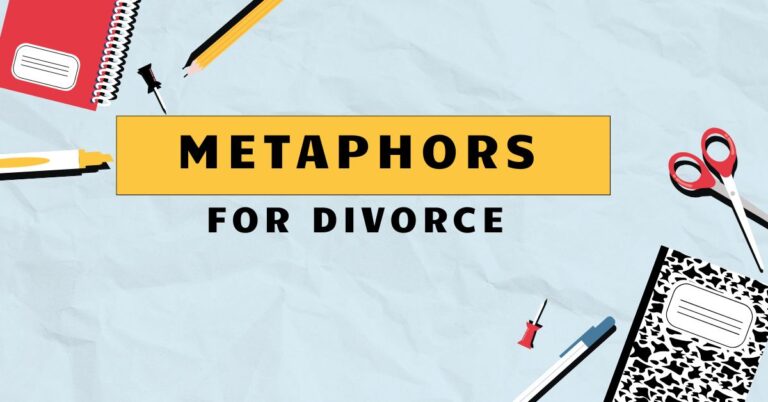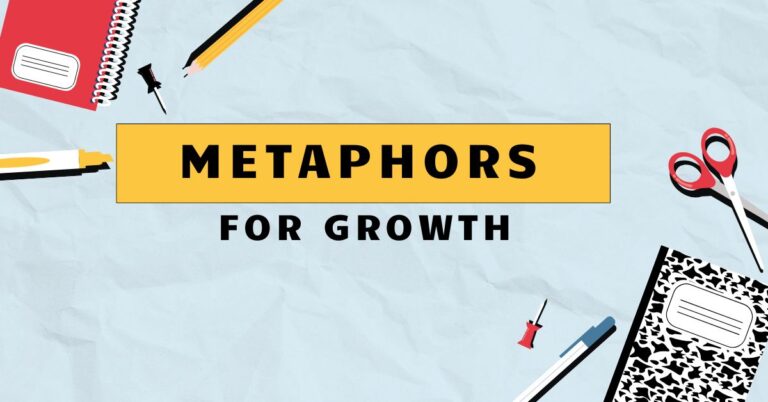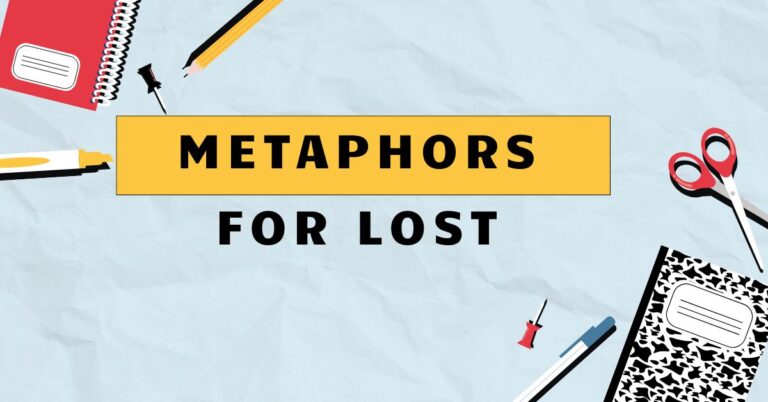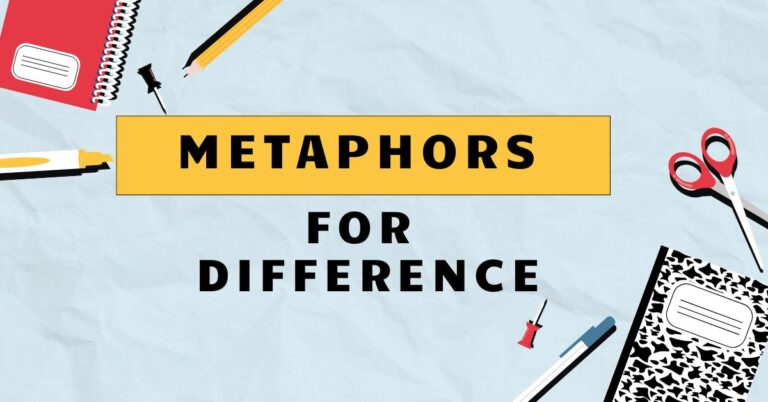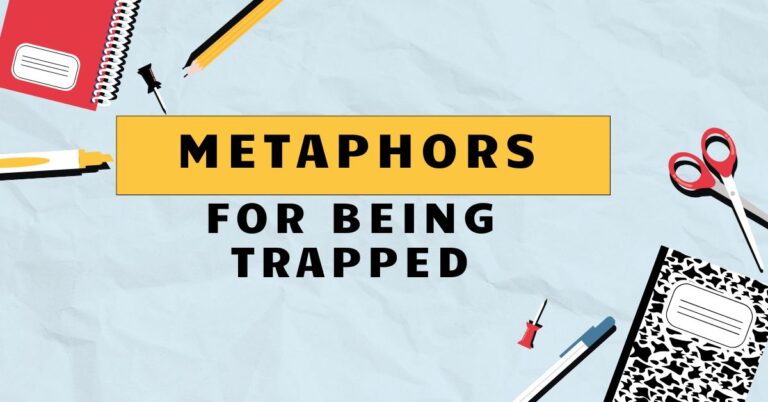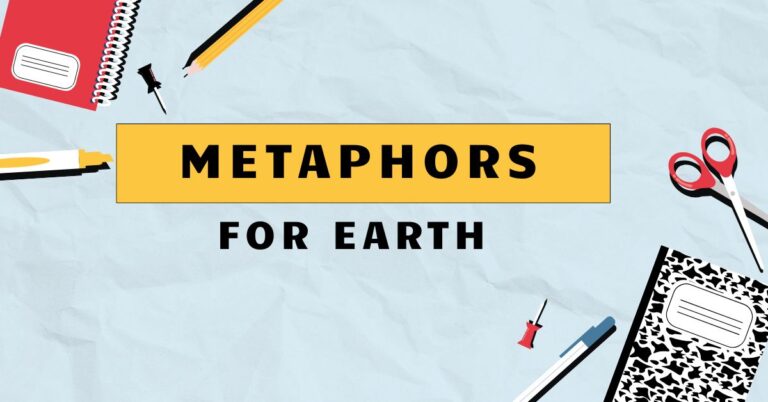39 Youth as Metaphor: Understanding Figurative Language
Metaphors comparing youth to various concepts are powerful tools in English, enriching language and imbuing it with deeper meaning. Understanding these metaphors not only enhances comprehension but also improves writing skills.
This article explores the diverse ways youth is used metaphorically, providing a comprehensive guide suitable for English language learners, educators, and anyone interested in the nuances of figurative language. By examining different types of metaphors, their structural elements, and common usage, readers will gain a thorough understanding of this fascinating aspect of English grammar and expression.
Table of Contents
- Introduction
- Definition of Metaphor for Youth
- Classification
- Function
- Contexts
- Structural Breakdown
- Types and Categories of Metaphors for Youth
- Youth as Spring
- Youth as Sunrise
- Youth as a Clean Slate
- Youth as a Seed
- Youth as Untamed Fire
- Examples of Metaphors for Youth
- Youth as a Journey Examples
- Youth as a Flower Examples
- Youth as a Song Examples
- Youth as a Game Examples
- Youth as a Battle Examples
- Usage Rules
- Appropriateness
- Consistency
- Cultural Sensitivity
- Common Mistakes
- Practice Exercises
- Exercise 1: Identifying Metaphors
- Exercise 2: Creating Metaphors
- Exercise 3: Correcting Misused Metaphors
- Advanced Topics
- Extended Metaphors
- Mixed Metaphors
- Dead Metaphors
- FAQ
- Conclusion
Definition of Metaphor for Youth
A metaphor for youth is a figure of speech that describes young people or the state of being young by comparing them to something else, without using “like” or “as.” This comparison is implicit, suggesting a similarity between youth and the other object or concept, enriching the description and conveying deeper meaning beyond the literal level. Metaphors for youth often evoke feelings of potential, innocence, energy, and growth.
Classification
Metaphors for youth can be classified based on the type of comparison they make. Common classifications include:
- Nature-based metaphors: Comparing youth to elements of nature like spring, sunrise, flowers, or seeds.
- Abstract metaphors: Comparing youth to abstract concepts like a journey, a song, a clean slate, or a game.
- Activity-based metaphors: Comparing youth to activities like a race, a battle, or a dance.
Function
The primary function of a metaphor for youth is to provide a vivid and relatable image that conveys the characteristics and qualities associated with being young. Metaphors can:
- Emphasize potential: Highlight the possibilities and opportunities that lie ahead for young people.
- Express innocence: Convey the purity and naiveté often associated with youth.
- Capture energy: Reflect the vitality, enthusiasm, and dynamism of young people.
- Evoke growth: Suggest the process of development, learning, and maturation that characterizes youth.
- Add emotional depth: Enhance the emotional impact of a description by associating youth with powerful imagery.
Contexts
Metaphors for youth are used in various contexts, including:
- Literature: Novels, poems, and plays often use metaphors to describe characters and themes related to youth.
- Poetry: Poets frequently employ metaphors to express the beauty, fragility, and transience of youth.
- Speeches: Speakers may use metaphors to inspire young people or to reflect on the significance of youth.
- Everyday conversation: People often use metaphors in casual conversation to describe young people or their own experiences of being young.
- Journalism: News articles and opinion pieces may use metaphors to comment on issues affecting young people.
Structural Breakdown
A metaphor typically consists of two parts: thetenorand thevehicle. The tenor is the subject being described (in this case, youth), and the vehicle is the object or concept to which it is being compared.
The connection between the tenor and the vehicle is implicit, relying on shared qualities or associations.
For example, in the metaphor “Youth is a blooming flower,” the tenor is “youth,” and the vehicle is “a blooming flower.” The metaphor suggests that youth, like a flower, is beautiful, vibrant, and in a state of growth. The effectiveness of the metaphor depends on the reader’s understanding of the qualities associated with blooming flowers.
Metaphors can be simple, consisting of just the tenor and vehicle, or more complex, incorporating additional elements to enhance the comparison. The context in which the metaphor is used also plays a crucial role in its interpretation.
Types and Categories of Metaphors for Youth
Metaphors for youth can be categorized based on the specific aspects of youth they emphasize and the objects or concepts they use for comparison. Here are some common types:
Youth as Spring
This metaphor emphasizes the themes of renewal, growth, and potential. Spring is a time of new beginnings, symbolizing the fresh start and opportunities associated with youth.
Examples include: “Youth is the spring of life,” and “Her youth was a vibrant spring, full of promise.”
Youth as Sunrise
This metaphor highlights the dawn of a new era, the beginning of a journey, and the potential for a bright future. The sunrise represents the early stages of life, full of hope and anticipation.
Examples include: “His youth was the sunrise of his career,” and “The sunrise of her youth promised a brilliant day.”
Youth as a Clean Slate
This metaphor underscores the lack of past experiences or prejudices, suggesting that young people have the opportunity to create their own identity and future. It emphasizes the potential for learning and growth without the burden of past mistakes.
Examples include: “Youth is a clean slate, ready to be written on,” and “He approached his youth as a clean slate, eager to learn.”
Youth as a Seed
This metaphor focuses on the potential for growth and development. A seed contains the inherent potential to grow into a mature plant, symbolizing the potential within young people to develop into successful and accomplished individuals.
Examples include: “Youth is a seed, full of potential,” and “Her youth was a seed, waiting to sprout and blossom.”
Youth as Untamed Fire
This metaphor captures the energy, passion, and intensity often associated with youth. Untamed fire represents the unbridled enthusiasm and rebellious spirit of young people.
Examples include: “Youth is an untamed fire, burning with passion,” and “His youth was an untamed fire, full of energy and rebellion.”
Examples of Metaphors for Youth
To further illustrate the use of metaphors for youth, here are several examples categorized by the type of comparison they make.
Youth as a Journey Examples
This table provides examples of metaphors that compare youth to a journey, emphasizing exploration, discovery, and the passage of time.
| Metaphor | Explanation |
|---|---|
| Youth is a winding road. | Implies that youth is full of twists, turns, and unexpected challenges. |
| Her youth was a voyage across uncharted waters. | Suggests that her youth was a time of exploration and discovery, with no clear path. |
| The journey of youth is filled with both sunshine and storms. | Highlights the ups and downs of youth, with moments of joy and periods of difficulty. |
| Youth is the first step on a long path. | Emphasizes that youth is the beginning of a lifelong journey. |
| His youth was a pilgrimage to find himself. | Suggests that his youth was a quest for self-discovery and identity. |
| Youth is the map of life, unfolded and waiting to be explored. | Implies potential and opportunity for discovery. |
| Her youth was a scenic route, full of beautiful views. | Suggests a pleasant and enjoyable youth. |
| Youth is a highway of dreams. | Emphasizes the aspirations and ambitions of young people. |
| His youth was a detour from the expected path. | Suggests an unconventional or unexpected journey through youth. |
| Youth is a passport to the future. | Implies that youth provides access to future opportunities. |
| Her youth was a rollercoaster ride, full of highs and lows. | Suggests an exciting but unpredictable experience. |
| Youth is a bridge to adulthood. | Emphasizes the transition from childhood to adulthood. |
| His youth was a treasure hunt, searching for meaning and purpose. | Suggests a quest for self-discovery and fulfillment. |
| Youth is a compass, guiding us towards our destination. | Implies that youth provides direction and purpose in life. |
| Her youth was a marathon, requiring endurance and perseverance. | Suggests that youth is a challenging but ultimately rewarding journey. |
| Youth is the open road, full of possibilities. | Emphasizes the freedom and potential of young people. |
| His youth was a crossroads, where he had to make important decisions. | Suggests that youth is a time of critical choices and decisions. |
| Youth is a train journey, with stops along the way. | Implies that youth is a series of experiences and milestones. |
| Her youth was a hike up a mountain, challenging but rewarding. | Suggests that youth is a journey of personal growth and achievement. |
| Youth is a sail into the unknown. | Emphasizes the uncertainty and potential of young people. |
| His youth was a blank map, waiting to be filled with adventures. | Suggests endless possibilities and experiences. |
| Youth is the first chapter of a long and exciting book. | Implies that youth is the beginning of a lifelong story. |
Youth as a Flower Examples
This table provides examples of metaphors that compare youth to a flower, emphasizing beauty, fragility, and growth.
| Metaphor | Explanation |
|---|---|
| Youth is a blooming flower. | Suggests beauty, vibrancy, and a state of growth. |
| Her youth was a delicate blossom, easily bruised. | Emphasizes the fragility and vulnerability of youth. |
| The flower of youth blooms briefly. | Highlights the fleeting nature of youth. |
| Youth is a bud waiting to open. | Emphasizes potential and the promise of future beauty. |
| His youth was a vibrant rose, full of life. | Suggests beauty, passion, and vitality. |
| Youth is the garden of life, full of colorful flowers. | Implies diversity and the beauty of different experiences. |
| Her youth was a wildflower, growing freely and untamed. | Suggests independence and a natural, uninhibited spirit. |
| Youth is a sunflower, reaching for the sky. | Emphasizes ambition and the pursuit of dreams. |
| His youth was a fragile orchid, requiring careful nurturing. | Suggests sensitivity and the need for support and guidance. |
| Youth is a bouquet of possibilities. | Implies a variety of opportunities and potential paths. |
| Her youth was a lotus, emerging from muddy waters. | Suggests resilience and the ability to overcome challenges. |
| Youth is a daisy, simple and pure. | Emphasizes innocence and a lack of pretense. |
| His youth was a thorny rose, beautiful but difficult to handle. | Suggests a complex personality with both beauty and challenges. |
| Youth is a field of wildflowers, diverse and beautiful. | Implies a variety of talents and personalities. |
| Her youth was a water lily, serene and graceful. | Suggests calmness and elegance. |
| Youth is a poppy, bright and bold. | Emphasizes confidence and a willingness to stand out. |
| His youth was a lavender field, calming and soothing. | Suggests a peaceful and tranquil nature. |
| Youth is a garden in full bloom, vibrant and alive. | Implies energy and a celebration of life. |
| Her youth was a cherry blossom, delicate and ephemeral. | Suggests the fleeting beauty of youth. |
| Youth is an unopened bud, full of potential and beauty. | Emphasizes the promise of future development. |
| His youth was a vibrant tulip, colorful and unique. | Suggests individuality and a distinctive personality. |
| Youth is a wildflower meadow, diverse and free-spirited. | Implies a sense of freedom and individuality. |
Youth as a Song Examples
This table provides examples of metaphors that compare youth to a song, emphasizing rhythm, harmony, and emotional expression.
| Metaphor | Explanation |
|---|---|
| Youth is a song waiting to be sung. | Suggests potential and the expression of inner feelings. |
| Her youth was a melody of joy and sorrow. | Emphasizes the emotional ups and downs of youth. |
| The song of youth is brief but memorable. | Highlights the fleeting nature of youth. |
| Youth is a symphony of dreams. | Emphasizes the grand and complex nature of aspirations. |
| His youth was a rock anthem, full of energy and rebellion. | Suggests passion, intensity, and a rebellious spirit. |
| Youth is a ballad of love and loss. | Implies emotional depth and the experience of both joy and sorrow. |
| Her youth was a lullaby, gentle and soothing. | Suggests peace, tranquility, and a sense of comfort. |
| Youth is a chorus of voices, singing in harmony. | Emphasizes collaboration and the power of collective action. |
| His youth was a jazz improvisation, spontaneous and unpredictable. | Suggests creativity, adaptability, and a willingness to take risks. |
| Youth is a musical score, waiting to be played. | Implies potential and the opportunity to create something beautiful. |
| Her youth was a blues tune, filled with melancholy and longing. | Suggests sadness, introspection, and a search for meaning. |
| Youth is a rap verse, bold and outspoken. | Emphasizes confidence, self-expression, and a willingness to challenge the status quo. |
| His youth was a classical composition, structured and refined. | Suggests discipline, elegance, and a pursuit of excellence. |
| Youth is a folk song, simple and heartfelt. | Implies sincerity, authenticity, and a connection to tradition. |
| Her youth was an opera, dramatic and passionate. | Suggests intensity, emotional depth, and a flair for the theatrical. |
| Youth is a silent melody, felt but not heard. | Emphasizes inner emotions and unspoken feelings. |
| His youth was a country tune, down-to-earth and relatable. | Suggests simplicity, honesty, and a connection to rural life. |
| Youth is a dance remix, energetic and innovative. | Implies creativity, adaptability, and a willingness to experiment. |
| Her youth was a dirge, filled with grief and mourning. | Suggests loss, sorrow, and a period of mourning. |
| Youth is a battle cry, loud and defiant. | Emphasizes courage, resistance, and a determination to fight for what is right. |
| His youth was a pop song, catchy and infectious. | Suggests popularity, appeal, and a tendency to follow trends. |
| Youth is a soulful tune, deep and moving. | Implies emotional depth, empathy, and a connection to the human spirit. |
Youth as a Game Examples
This table provides examples of metaphors that compare youth to a game, emphasizing competition, strategy, and learning.
| Metaphor | Explanation |
|---|---|
| Youth is a game of chance. | Suggests that luck and unforeseen circumstances play a role in life. |
| Her youth was a chess match, requiring strategy and foresight. | Emphasizes the need for planning and careful decision-making. |
| The game of youth is filled with challenges and rewards. | Highlights the ups and downs of growing up. |
| Youth is a playground of possibilities. | Emphasizes the freedom to explore and experiment. |
| His youth was a football game, full of teamwork and competition. | Suggests the importance of collaboration and striving for success. |
| Youth is a board game, with rules to be followed. | Implies that life has structure and boundaries. |
| Her youth was a hide-and-seek adventure, full of surprises. | Suggests a sense of exploration and discovery. |
| Youth is a video game, with levels to be conquered. | Emphasizes the need for progress and overcoming obstacles. |
| His youth was a poker game, requiring bluffing and risk-taking. | Suggests the need to take calculated risks and be strategic. |
| Youth is a puzzle, waiting to be solved. | Implies that life is a mystery that needs to be understood. |
| Her youth was a scavenger hunt, searching for meaning and purpose. | Suggests a quest for self-discovery and fulfillment. |
| Youth is a race against time. | Emphasizes the fleeting nature of youth and the need to make the most of it. |
| His youth was a game of tag, full of energy and excitement. | Suggests a carefree and playful approach to life. |
| Youth is a treasure hunt, seeking out valuable experiences. | Implies that life is a journey of discovery and enrichment. |
| Her youth was a game of charades, with hidden meanings and intentions. | Suggests that communication can be complex and nuanced. |
| Youth is a game of survival, adapting to changing circumstances. | Emphasizes the need for resilience and adaptability. |
| His youth was a game of make-believe, full of imagination and creativity. | Suggests the importance of imagination and playfulness. |
| Youth is a game of strategy, planning for the future. | Implies the need for foresight and long-term thinking. |
| Her youth was a game of hopscotch, skipping over obstacles. | Suggests the ability to overcome challenges and move forward. |
| Youth is a game of dodgeball, avoiding negativity and setbacks. | Emphasizes the need to be resilient and avoid harmful influences. |
| His youth was a game of Simon Says, following rules and instructions. | Suggests the importance of discipline and obedience. |
| Youth is a game of truth or dare, exploring boundaries and taking risks. | Implies the need to be honest and willing to step outside one’s comfort zone. |
Youth as a Battle Examples
This table provides examples of metaphors that compare youth to a battle, emphasizing challenges, resilience, and the struggle for identity.
| Metaphor | Explanation |
|---|---|
| Youth is a battle against ignorance. | Suggests the challenge of acquiring knowledge and understanding. |
| Her youth was a war against conformity. | Emphasizes the struggle to maintain individuality and resist societal pressures. |
| The battle of youth is fought on many fronts. | Highlights the diverse challenges and struggles of growing up. |
| Youth is a battlefield of emotions. | Emphasizes the intensity and turmoil of adolescent feelings. |
| His youth was a siege against doubt and insecurity. | Suggests the need to overcome self-doubt and build confidence. |
| Youth is an armistice with reality. | Implies a temporary peace before facing the full challenges of adulthood. |
| Her youth was a crusade for justice and equality. | Suggests a passionate commitment to fighting for social change. |
| Youth is a skirmish against expectations. | Emphasizes the struggle to meet or defy societal and parental expectations. |
| His youth was a campaign to find his place in the world. | Suggests a determined effort to establish his identity and purpose. |
| Youth is a defense against despair. | Implies the need to maintain hope and optimism in the face of adversity. |
| Her youth was a rebellion against authority. | Suggests a resistance to traditional norms and structures. |
| Youth is a struggle for identity. | Emphasizes the challenge of discovering and defining oneself. |
| His youth was a fight for independence. | Suggests the desire to break free from parental control and establish autonomy. |
| Youth is a conflict between dreams and reality. | Emphasizes the tension between aspirations and the limitations of the real world. |
| Her youth was a contest against limitations. | Suggests a determination to overcome obstacles and achieve goals. |
| Youth is a war of attrition against time. | Emphasizes the gradual but inevitable loss of youth and vitality. |
| His youth was a battle of wills against his own demons. | Suggests an internal struggle to overcome personal weaknesses and challenges. |
| Youth is a confrontation with mortality. | Emphasizes the awareness of life’s impermanence and the need to make the most of it. |
| Her youth was a resistance movement against complacency. | Suggests a determination to stay active, engaged, and avoid stagnation. |
| Youth is a test of character. | Emphasizes the challenges that shape and define who we become. |
| His youth was a trial by fire. | Suggests a period of intense hardship and testing that ultimately strengthens and refines. |
| Youth is a race to self-discovery. | Emphasizes the urgency and importance of finding one’s true self. |
Usage Rules
While metaphors can add richness and depth to language, it is important to use them carefully and appropriately. Here are some guidelines to follow:
Appropriateness
Choose metaphors that are relevant to the context and audience. A metaphor that is effective in one situation may not be appropriate in another.
Consider the tone and style of your writing or speech, and select metaphors that align with it.
Consistency
Maintain consistency in your use of metaphors. Avoid mixing metaphors that clash or create confusing images.
If you start with one metaphor, stick with it throughout the passage or speech.
Cultural Sensitivity
Be mindful of cultural differences and sensitivities when using metaphors. A metaphor that is common and accepted in one culture may be offensive or misunderstood in another.
Do your research and be respectful of different cultural perspectives.
Common Mistakes
One common mistake is usingclichéd metaphors, which are overused and have lost their impact. For example, saying “Youth is a rollercoaster” is a clichéd metaphor that doesn’t add much to the description.
Instead, try to create fresh and original metaphors that offer a unique perspective.
Another common mistake is usingmixed metaphors, which combine incompatible images. For example, saying “Youth is a blooming flower sailing on a stormy sea” is a mixed metaphor that creates a confusing and contradictory image.
It’s better to stick to a single, coherent metaphor.
Here are some examples of common mistakes and their corrections:
| Incorrect | Correct |
|---|---|
| Youth is a rollercoaster, a blank canvas, and a ticking clock. | Youth is a blank canvas, waiting to be filled with experiences. |
| His youth was a stormy sea of opportunity. | His youth was a stormy sea, full of challenges and uncertainties. |
| Youth is a garden of dreams taking flight. | Youth is a garden of dreams, waiting to blossom. |
Practice Exercises
Test your understanding of metaphors for youth with these exercises.
Exercise 1: Identifying Metaphors
Identify the metaphors in the following sentences and explain what they mean.
| Sentence | Answer |
|---|---|
| Youth is the dawn of a new day. | Metaphor: Youth is the dawn. Meaning: Youth is the beginning of life, full of hope and potential. |
| Her youth was a wild fire, burning with passion. | Metaphor: Youth was a wild fire. Meaning: Her youth was full of intense energy and enthusiasm. |
| Youth is a blank page, waiting to be written on. | Metaphor: Youth is a blank page. Meaning: Youth is a time of potential and opportunity, without past experiences or prejudices. |
| His youth was a winding river, full of twists and turns. | Metaphor: Youth was a winding river. Meaning: His youth was a journey with unexpected challenges and changes. |
| Youth is a seed, full of potential. | Metaphor: Youth is a seed. Meaning: Youth has the potential to grow and develop into something great. |
| Youth is a song of freedom. | Metaphor: Youth is a song. Meaning: Youth is a time for self-expression and independence. |
| Her youth was a labyrinth of choices. | Metaphor: Youth was a labyrinth. Meaning: Her youth presented many confusing and difficult decisions. |
| Youth is a mountain to climb. | Metaphor: Youth is a mountain. Meaning: Youth presents challenges and requires effort to overcome. |
| His youth was a battlefield of emotions. | Metaphor: Youth was a battlefield. Meaning: His youth was marked by intense and conflicting feelings. |
| Youth is a ship setting sail. | Metaphor: Youth is a ship. Meaning: Youth is the beginning of a journey towards the future. |
Exercise 2: Creating Metaphors
Create metaphors for youth using the following concepts:
| Concept | Metaphor |
|---|---|
| A garden | Youth is a garden in full bloom, vibrant and alive. |
| A puzzle | Youth is a puzzle, waiting to be solved. |
| A race | Youth is a race against time, make the most of it. |
| A book | Youth is the first chapter of a long and exciting book. |
| A storm | Youth is a storm of emotions, intense and overwhelming. |
| A dance | Youth is a dance, full of rhythm and movement. |
| A dream | Youth is a dream, full of hope and possibility. |
| A promise | Youth is a promise, full of potential and expectation. |
| A challenge | Youth is a challenge, waiting to be faced and overcome. |
| A gift | Youth is a gift, to be cherished and appreciated. |
Exercise 3: Correcting Misused Metaphors
Correct the misused metaphors in the following sentences.
| Incorrect Sentence | Corrected Sentence |
|---|---|
| Youth is a rollercoaster, a blank canvas, and a stormy sea. | Youth is a blank canvas, waiting to be filled with experiences. |
| His youth was a blooming flower sailing on a stormy sea. | His youth was a blooming flower, full of beauty and potential. |
| Youth is a garden of dreams taking flight. | Youth is a garden of dreams, waiting to blossom. |
| Her youth was a symphony of choices, a winding road, and a ticking clock. | Her youth was a symphony of choices, each note shaping her future. |
| Youth is a battle against time, a blank page, and a fragile flower. | Youth is a battle against time, urging us to seize every moment. |
| Youth is a song of freedom, a race against the clock, and a ship in a storm. | Youth is a song of freedom, echoing with possibilities. |
| His youth was a labyrinth of choices, a garden of dreams, and a rollercoaster ride. | His youth was a labyrinth of choices, each path leading to a new destination. |
| Youth is a mountain to climb, a blank canvas, and a seed of hope. | Youth is a mountain to climb, challenging us to reach new heights. |
| Her youth was a battlefield of emotions, a winding river, and a fragile flower. | Her youth was a battlefield of emotions, a struggle for self-discovery. |
| Youth is a ship setting sail, a storm of emotions, and a blank page. | Youth is a ship setting sail, embarking on a journey of discovery. |
Advanced Topics
For those looking to deepen their understanding of metaphors for youth, here are some advanced topics to explore.
Extended Metaphors
An extended metaphor is a metaphor that is developed over several lines or even throughout an entire piece of writing. It allows for a more detailed and nuanced comparison between youth and the chosen vehicle.
For example, an extended metaphor could compare youth to a garden, exploring the different stages of growth, the types of plants, and the challenges of cultivation.
Example:
Mixed Metaphors
A mixed metaphor combines two or more incompatible metaphors in a single expression, creating a confusing and often humorous effect. While mixed metaphors are generally considered a mistake, they can be used intentionally for comedic effect or to create a surreal image.
However, it is important to be aware of the potential for confusion and to use mixed metaphors sparingly.
Example of a mixed metaphor (incorrect):
Corrected version:
Dead Metaphors
A dead metaphor is a metaphor that has become so common that it is no longer recognized as a figure of speech. These metaphors have lost their original imagery and are used literally.
While dead metaphors are not necessarily incorrect, they can make writing less vivid and engaging. It is often better to replace dead metaphors with fresh and original ones.
Examples of dead metaphors:
- “Time flies”
- “Heart of gold”
- “Walking on eggshells”
FAQ
Conclusion
Metaphors for youth are powerful tools for expressing the unique qualities and experiences of being young. By understanding the different types of metaphors, their structural elements, and common usage, you can enhance your comprehension and writing skills.
Whether you are a student, educator, or simply someone who appreciates the beauty of language, exploring metaphors for youth can enrich your understanding of both language and life.

